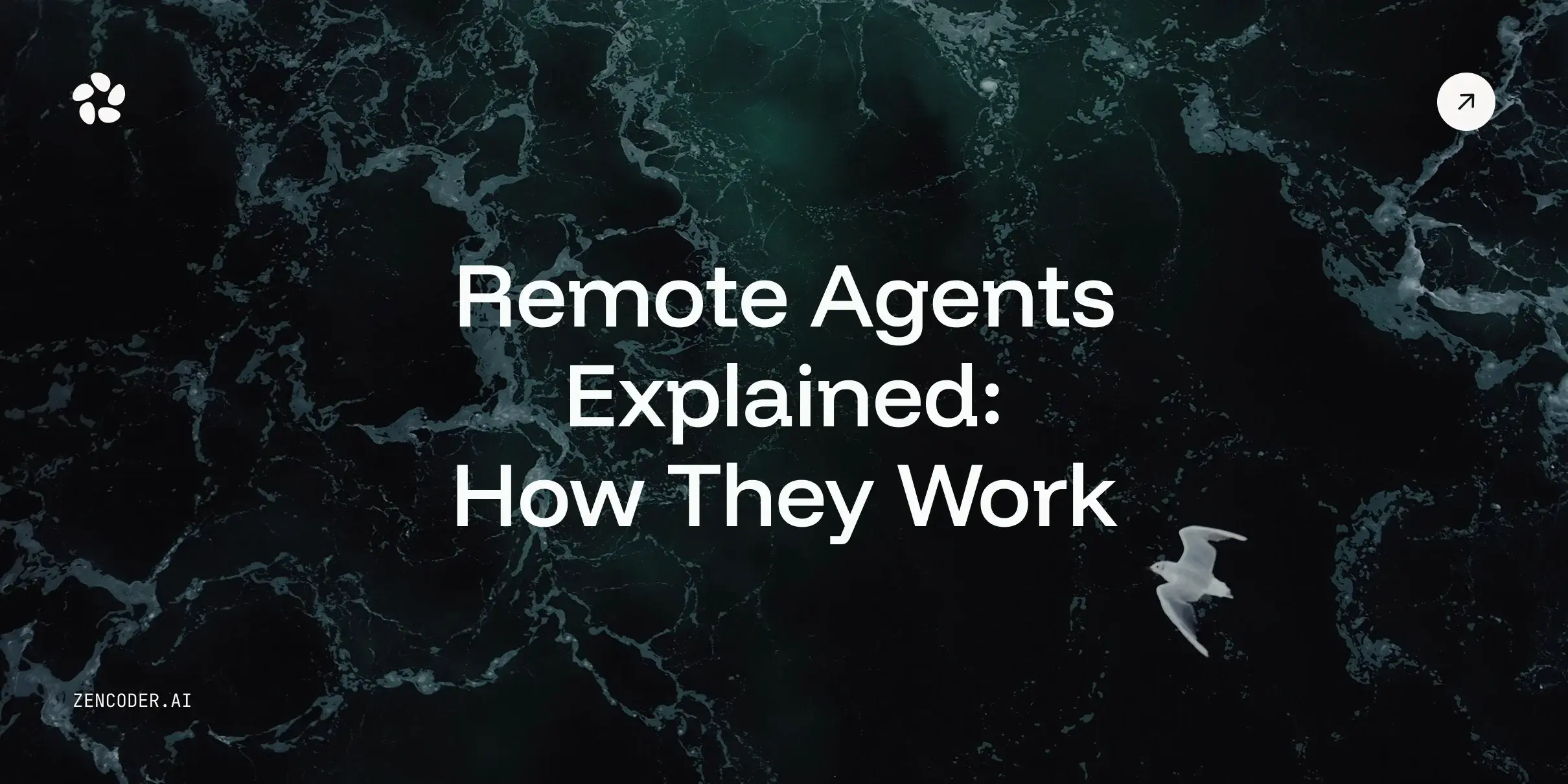Introduction
In the world of software development, a quiet revolution is underway. It's not about flashy new programming languages or frameworks. Instead, it's about teaching machines to truly understand the code we write. This emerging field, known as semantic analysis in AI code generation, promises to transform how we create, maintain, and evolve software.
But what exactly is semantic analysis, and why should developers care? Let's dive in.
The Basics of Semantic Analysis
At its core, semantic analysis is about understanding meaning. In the context of programming, it's the difference between an AI that can read code and one that can comprehend it. Traditional code generation tools often work on a superficial level, pattern-matching and filling in templates without true understanding. Semantic analysis takes things to a whole new level.
Here's a simple example to illustrate the difference:

A traditional code generation tool might suggest completions based on common patterns or syntax. It might offer to complete the print statement or suggest similar function names.
A semantically-aware AI, on the other hand, would understand that:
- This function calculates the area of a rectangle.
- The variables length and width represent dimensions.
- The result is likely to be used in further calculations or displayed to a user.
With this understanding, it could offer more intelligent suggestions, like:
- Adding input validation to ensure length and width are positive numbers.
- Suggesting a more specific function name like calculate_rectangle_area.
- Proposing the addition of units to the output, e.g., "square meters".
This deeper comprehension allows for more meaningful assistance in coding tasks.
The Building Blocks of Semantic Analysis
To achieve this level of understanding, semantic analysis relies on several key techniques:
Abstract Syntax Tree (AST) Analysis
An Abstract Syntax Tree is a tree representation of the syntactic structure of code. It's like a map of your code's grammar. AST analysis allows AI to understand the relationships between different parts of your code.
For example, consider this simple JavaScript code:

An AST for this code might look something like:

By analyzing this structure, AI can understand the logical flow and relationships in the code, enabling more intelligent suggestions and analysis.
Data Flow Analysis
Data flow analysis tracks how data moves and changes throughout a program. It helps AI understand the purpose and lifecycle of variables and functions.
Let's look at a simple Python example:

Through data flow analysis, AI can understand that:
- raw_data is transformed into cleaned_data
- cleaned_data is then transformed into normalized_data
- The final result depends on all these transformations
This understanding allows AI to make smarter suggestions about error handling, optimization, or potential bugs related to data manipulation.
Control Flow Analysis
Control flow analysis examines the sequence of instructions executed in a program. It helps AI understand decision points, loops, and function calls.
Consider this C++ snippet:

Control flow analysis would help AI understand:
- There's an initial check for an empty vector
- The function might throw an exception
- There's a loop that compares each number to the current maximum
- The function always returns a value if no exception is thrown
This understanding enables AI to suggest improvements like optimizing the loop or adding additional error checks.
Natural Language Processing of Comments and Documentation
Comments and documentation provide crucial context that pure code analysis might miss. By applying NLP to these human-written explanations, AI gains insights into the programmer's intentions.
For instance:

NLP analysis of this comment helps AI understand that:
- This function calculates factorials
- It uses a recursive approach
- The base cases are 0 and 1
With this information, AI could suggest improvements like adding error handling for negative numbers or proposing an iterative version for better performance with large inputs.
Ontological Mapping
Ontological mapping connects code concepts to real-world domains. It helps AI understand the context in which the code operates.
For example, in a financial application:
![]()
With ontological mapping, AI would understand that:
- This function relates to finance
- principal is an initial sum of money
- rate is an interest rate
- time is likely in years
- n represents compounding frequency
This understanding allows AI to make domain-specific suggestions, like ensuring the rate is in decimal form (e.g., 0.05 for 5%) or proposing the addition of inflation adjustment.
The Benefits of Semantic Understanding
Now that we've covered the building blocks, let's explore how this deep understanding translates into practical benefits for developers.
Smarter Code Completion
Forget about simple keyword-based autocompletion. Semantic analysis enables context-aware suggestions that understand your code's purpose and structure.
For instance, when working with a database in Python:

A semantically-aware AI might suggest:
![]()
It understands you're likely to perform a database operation next and can even suggest table names based on your schema.
Intelligent Refactoring
Refactoring code is no longer a solely human task. AI can now suggest meaningful refactorings that improve code structure and readability while preserving functionality.
Consider this JavaScript function:

A semantically-aware AI might suggest refactoring to:

This refactoring simplifies the logic and reduces nesting, improving readability.
Proactive Bug Detection
By understanding the intended behavior of code, AI can spot potential bugs that might slip past traditional static analysis tools.
For example:

A semantically-aware AI might flag this function, noting that it doesn't handle the case of an empty list, which would lead to a division by zero error.
Architecture Optimization
With its holistic view of codebases, AI can suggest structural improvements that human developers might overlook.
For instance, in a large project, AI might identify:
- Circular dependencies between modules
- Opportunities for better code reuse
- Inconsistencies in API design across different parts of the system
These insights can lead to more maintainable and efficient code architectures.
Domain-Specific Enhancements
By connecting code to real-world concepts, AI can offer optimizations tailored to specific fields like scientific computing, web development, or financial modeling.
In a machine learning project, for example, AI might suggest:
- More efficient matrix operations for large datasets
- The use of GPU acceleration for certain computations
- Techniques for handling imbalanced datasets
These domain-specific insights can significantly improve code quality and performance.
The Learning Loop: Continuous Improvement
One of the most exciting aspects of semantic analysis in AI code generation is its potential for ongoing learning and improvement. As these systems interact with more codebases and developers, they build increasingly sophisticated models of how humans think about and structure code.
This creates a virtuous cycle:
- AI analyzes vast amounts of code and developer interactions
- It builds more nuanced models of coding patterns and best practices
- These improved models lead to better suggestions and insights
- Developers write better code with AI assistance
- This better code feeds back into the AI's learning process
Over time, this cycle leads to increasingly sophisticated AI assistants that can handle more complex coding tasks and provide more valuable insights.
Challenges and Future Directions
While semantic analysis in AI code generation is promising, it's not without challenges. Here are some of the hurdles researchers and developers are working to overcome:
Handling Ambiguity
Human intentions aren't always clear, even in code. AI systems need to get better at dealing with ambiguity, possibly by engaging in dialogue with developers to clarify intentions.
Scaling to Large Codebases
While semantic analysis works well for individual files or small projects, scaling these techniques to massive codebases with millions of lines of code remains challenging.
Preserving Privacy and Security
As AI gains deeper understanding of code, ensuring that sensitive information or proprietary algorithms aren't inadvertently revealed becomes crucial.
Explaining AI Decisions
For developers to trust and effectively use AI suggestions, the systems need to be able to explain their reasoning in human-understandable terms.
Adapting to New Programming Paradigms
As new programming models emerge (like quantum computing), semantic analysis systems need to be flexible enough to adapt.
Seamless Integration with Development Workflows
For maximum impact, semantically-aware AI needs to integrate smoothly with existing development tools and processes.
The Future of Coding
As semantic analysis in AI code generation continues to evolve, we can expect to see profound changes in how software is developed:
More Accessible Programming
AI assistants that truly understand code could make programming more accessible to newcomers, providing context-aware guidance and explanations.
Faster Development Cycles
With AI handling more routine coding tasks and providing intelligent suggestions, developers could focus on high-level design and innovation, potentially speeding up development cycles.
Improved Code Quality
By catching potential bugs early and suggesting optimizations, AI could help improve overall code quality and reliability.
Enhanced Learning and Knowledge Transfer
AI systems could serve as tireless mentors, helping junior developers understand complex codebases and learn best practices more quickly.
Cross-Language Insights
By focusing on underlying concepts rather than syntax, AI could help transfer knowledge and patterns between different programming languages and paradigms.
Conclusion
Semantic analysis in AI code generation represents a significant leap forward in the field of software development. By teaching machines to truly understand the code we write, we're opening up new possibilities for creativity, efficiency, and reliability in programming.
As these technologies mature, they have the potential to transform not just how we write code, but how we think about programming itself. The future of coding is likely to be a collaborative effort between human creativity and machine intelligence, with semantic analysis serving as the bridge between these two realms.
While challenges remain, the potential benefits are enormous. As we continue to refine and expand our approaches to semantic analysis in code generation, we're not just changing how we write software; we're redefining the very nature of what it means to program.
The semantic revolution in AI code generation is just beginning, and its full impact is yet to be seen. But one thing is clear: the code we write tomorrow will be smarter, more efficient, and more powerful than ever before, thanks to the deep understanding provided by semantic analysis.


.webp)

![Save 90% on AI Costs Using Claude, Codex & Gemini [Guide]](https://zencoder.ai/hubfs/Universal_CLI_04.png)